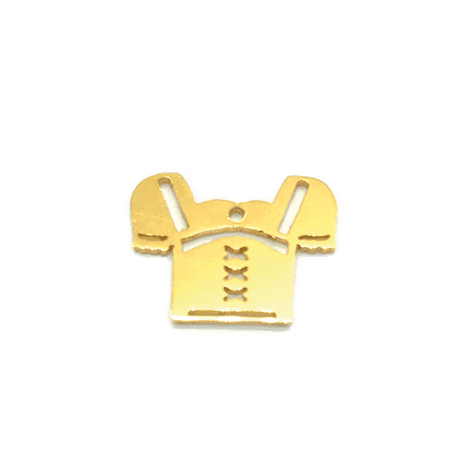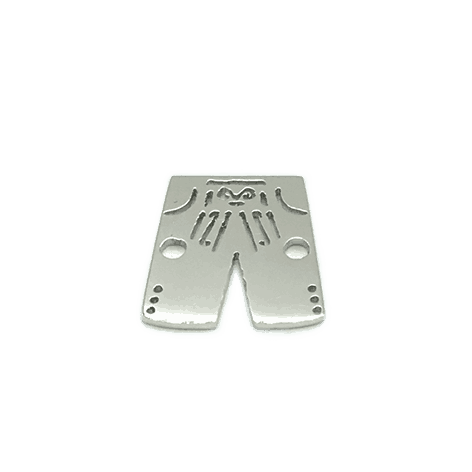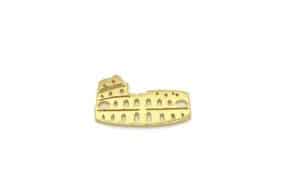The Munich Oktoberfest celebrates its 189th anniversary in 2024 and takes place from 21 September to 6 October 2024. What began as a prince's wedding attracts visitors from all over the world to the Bavarian capital. With over six million guests, it is the largest folk festival in the world.
In the beginning it was a horse race
On 12 October 1810, the Crown Prince and later King Ludwig I married Princess Therese of Saxe-Hildburghausen. The celebrations lasted a total of five days and ended on 17 October with a horse race on the Theresienwiese in Munich. From then on, the race was celebrated every year.
he large tents arrived in 1896
From 1811 onwards, a simultaneous Agricultural exhibition which can still be found in the south of the fairground every four years. Gradually, there were more and more stalls where you could buy beer and, from 1896, large beer tents erected by the breweries.
The right tent for every taste
In total there are 14 big tents at the Oktoberfest. Each of them has its own ‘charm’ and therefore attracts a very specific target group.
A no-go for locals ist the Hofbräuzelt. This is where you mainly meet Americans, Italians and all those who usually hang out in the Hofbräuhaus. It's more or less an offshoot of it in tent form. It's rarely quiet here. The entire Hofbräu, with its visitors from all corners of the world, is in an exuberant party mood from early in the morning. In terms of fashion, the tent is a total failure - people wear all kinds of tasteless things here, such as chicken hats, ‘traditional Bavarian costumes’ from Asia or simply what they wear all year round or on the campsite anyway.
At Schottenhamel it's a different story. Most people come in high-quality traditional costume or preppy style. It's one of the tents that Munich locals rather than tourists go to. Also the tapping of the Oktoberfest by the Lord Mayor takes place here every year. Incidentally, Munich locals call it the children's tent, as most of the guests here are under 20 and bring their parents' money to the people.
Tradition meets Schickimicki at Käferzelt
The Käfer Wiesn-Schänke is a meeting place for the rich, celebrities and those who want to become one. It is not a tent at all, but looks more like a large alpine hut. This is where everyone gathers to see and be seen. The whole thing is spread over two floors. The atmosphere is great, but you can forget going in spontaneously, as the entire Oktoberfest is fully booked. As far as the traditional costume style is concerned, many are very well dressed here, but of course there are also some real outliers with dirndl-like dresses in bright colours, too much jewellery, too much make-up and too much Botox.
The Augustinerzelt is the tent of the Urmünchner. According to the locals, it has the best beer and the traditional charm of the Oktoberfest. The beer here comes from wooden barrels and not from large steel tanks as in the other tents.
To this day, only beer from the six Munich breweries (Paulaner, Hofbräu, Augustiner, Hacker-Pschorr, Löwenbräu and Spaten) may be served at the Oktoberfest.
From around 1880, rides and fairground stalls of all kinds were established to entertain visitors.  The so-called ‘Oide Wiesn’, which has been around since 2011, is a nostalgic area reminiscent of the Oktoberfest of yesteryear. It is much more cosy here and therefore particularly suitable for a visit with smaller children.
The so-called ‘Oide Wiesn’, which has been around since 2011, is a nostalgic area reminiscent of the Oktoberfest of yesteryear. It is much more cosy here and therefore particularly suitable for a visit with smaller children.
A virus prevents the folk festival
From the end of the Second World War, there were no more horse races at the Oktoberfest, except for the 150th and 200th anniversaries. You might wonder why the 200th anniversary has already been celebrated, although the 189th Wiesn will not take place until 2024. The explanation for this is that the festivities relate to how long the Oktoberfest has existed and not how often. During the cholera epidemic, the wars and the post-war years, the Wiesn was cancelled. And what nobody could have imagined - in 2020 and 2021, a globally rampant virus once again prevented the world's biggest folk festival from taking place.
Wiesn vegan, vegetarian and for water drinkers
The general trend towards meat-free eating has now also arrived at the Wiesn. Vegetarian and vegan dishes are now available in all tents and certified organic food is also on offer. You can also get free fresh spring water at the Oktoberfest. This is to avoid the admittedly hefty beer price of around 15 euros per pint. Our opinion - you can drink water and eat less meat all year round. For us, chicken and a cool beer are simply part of the Oktoberfest!
O'zapft is - the mayor does the tapping
The Oktoberfest usually begins on the 3rd Saturday of September with the arrival of the breweries and Oktoberfest hosts. The host families and waitresses of the individual tents travel from Munich's Josephspitalstraße towards the Theresienwiese in horse-drawn carriages decorated with flowers and led by the city's landmark, the Münchner Kindl.
At 12 noon, the Lord Mayor of Munich traditionally taps the first beer barrel in the Schottenhamel tent, the Bavarian Minister President receives the first beer and the Wiesn is opened.
On Sunday follows the traditional costume parade with around 9,000 participants from all over Europe and thousands of onlookers. It was first held in 1835 to celebrate the silver wedding anniversary of King Ludwig I and Therese of Bavaria. The parade starts at 10 a.m. at the Max II monument and ends at Esperantoplatz.
On the Italian weekend, Munich is in Italian hands
Italian weekend is a firm Wiesn term. Munich residents who are asked about their origins in Italy usually get a positive reaction. The Italian counterpart smiles knowingly and says ‘ah, Oktoberfest’. For Italians, the Bavarian city is firmly associated with this annual event. Many of them have already been there, want to go once or keep coming back.
Although there are visitors from all over the world at the Munich Oktoberfest, Italians make up the largest proportion with around 20 per cent. Traditionally, people travelling to the second Oktoberfest weekend, which is also called Italian weekend. zweiten Oktoberfest-Wochenende an, das deshalb auch Italiener-Wochenende genannt wird.
In a motorhome over the Brenner Pass
On the Friday in question, countless camper vans with Italian licence plates and cheerful occupants drive towards the state capital to have fun at the ‘Festa della birra’. This form of travelling is so popular because it is relatively inexpensive. If there are several passengers, the motorway tolls and petrol costs can be easily shared and the overnight stay at one of Munich's campsites is also affordable.
Parking spaces are available in Thalkirchen, Siebenburger Straße or the ‘Oktoberfest Camp’ at the Neue Messe Riem. To avoid major traffic chaos, the local radio stations will be giving tips on how to get there in Italian. And the Munich police are getting extra reinforcements from South Tyrol for the Italian weekend. In addition, volunteers from the South Tyrolean regional rescue organisation ‘White Cross’ support the first-aid station at the Wiesn.
talians storm the Oktoberfest in the morning
The locals avoid the Oktoberfest on the Italian weekend, as the tents are already overcrowded at midday due to the guests from the south. The Italians like to arrive very early in order to secure a place in the large beer temples. Those who have secured a seat drink their first beer quite quickly.
Those who arrive early are also ‘full’ early
The alcohol content of Oktoberfest beer is often underestimated, with the result that quite a few Italians are happy on the so-called ’Kotzhügel’, the green area below the Bavaria. And the mixture of Italians and alcohol can also be quite exhausting for female Oktoberfest visitors. The flirtatious mood of the hot-blooded visitors also rises sharply with increasing beer consumption.
Music and fireworks at the Bavaria
On the middle Wiesn Sunday the concert of the marquee bands below the Bavaria will also begin at 11 am. It is conducted by the Lord Mayor of Munich and other celebrities. At the end of the Wiesn, on 3 October, there is the traditional Bavarian marksmen's gun salute at the same location.
Our 5 best tips for the Oktoberfest
1. How to get there
If you don't live in the immediate vicinity of the Oktoberfest, you have to get to the Theresienwiese first. But how?
Travelling by car is not an option, as there are no parking spaces and you are not allowed to drink beer. Taking the underground is better, but the trains are totally overcrowded. You can also forget about calling a taxi during the Wiesn. That's why you should book at least one day in advance. To get away from the Theresienwiese at night, it is advisable not to walk towards the main entrance, but to the southern end. There are usually plenty of taxis there.
2. Clothing
Traditional costume is actually compulsory at the Oktoberfest.
However, this means traditional dirndls and lederhosen and not cheap clothes produced in China in traditional costume style or dirndl-like bling-bling dresses. So-called country house fashion is also out of the question. Wiesn is not Carnival! So - if you don't want to make a fool of yourself, either wear an original costume or simply come in jeans. 

The shoes don't necessarily have to be very traditional models. You can also wear trainers (for men ONLY, of course, and not chucks at all), nice sandals or pumps, but definitely not worn-out ballerinas.
Bags are also a bit of a difficult subject - if they are to be carried at all, then they should be small and designed to be worn around the neck. Anything else is rather impractical and an invitation for pickpockets. If you think the solution is a rucksack - no, Oktoberfest is not hiking. You can disfigure any traditional costume with it, even with a small...
3. Wiesn-German
Munich residents are tolerant in themselves, but not when it comes to the correct pronunciation of Oktoberfest terms! You don't say ‘ein or eine Maas’, but ‘a Mass’. It is also not ‘Wiese or Wiesen’, but ‘Wiesn’, not ‘Händel’, but ‘Hendl’ and also not ogezapft, but o'zapft.
4. A place in the tent
If you don't have a reservation, you shouldn't even try to get a place in the tent on the first and also on the Italian weekend. On the last Sunday and at lunchtime during the week, you can usually still find a free table.
5. Wiesn-Cough
The crowds of people at the Oktoberfest are an Eldorado for viruses and bacteria. If you don't want to get a Wiesn cough, you should wash your hands regularly, not give out too many kisses and preferably drink from above the handle of the beer mug.

